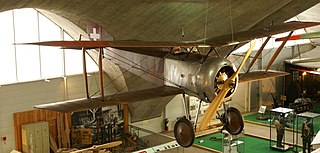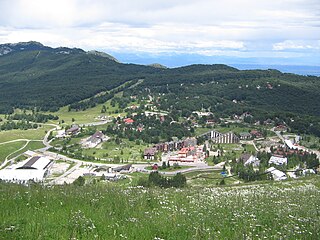Sottotenente Michele Allasia was a World War I fighter ace credited with five aerial victories.
Maggiore Sebastiano Bedendo was a World War I flying ace credited with five aerial victories. After completing his education postwar, he rejoined Italian military aviation. He set several world aviation flying records with a Nuvoli N.5 monoplane before dying in an air crash.
Tenente ColonnelloAlessandro Buzio was an Italian World War I flying ace credited with six aerial victories, four of them shared.
Sergente MaggioreGuglielmo Fornagiari was a World War I flying ace credited with six aerial victories.
Tenente Luigi Olivi was a World War I flying ace credited with six aerial victories. He won two awards of the Silver Medal for Military Valor and was killed in action.
Sergente Romolo Ticconi was a World War I flying ace credited with six aerial victories.
TenenteMario Fucini was a World War I flying ace who claimed credit for 13 aerial victories during the war; seven of these were confirmed in 1919.
Tenente Gastone Novelli was a World War I flying ace credited with eight aerial victories.
Capitano Antonio Reali was an Italian World War I flying ace credited with eleven confirmed aerial victories, and 22 unconfirmed victories. He served in the Regia Aeronautica Reserves from 1923 to about 1940.
Flaminio Avet was a World War I flying ace credited with eight aerial victories. Although born in Nice, France, he served in the Italian military as Italy entered World War I. After a transfer from Lancers to aviation, he trained as a pilot. He began his aerial combat career on 27 November 1918, and would stake a dozen victory claims, eight of which would be verified. He ended the war having won the Silver Medal for Military Valor three times. He returned to Nice postwar, and died there on 21 August 1928.
CapitanoErnesto Cabruna (1889–1960) was a professional soldier who became a World War I flying ace credited with eight aerial victories. He served in Italy's military police, beginning in 1907. After service in Libya and Rhodes, he received a Bronze Medal for Military Valor a year after Italy's involvement in World War I began. He turned to aviation, became a pilot, and as such earned his first Silver Medal for Military Valor at the end of 1917.

71a Squadriglia of the Corpo Aeronautico Militare was one of the original fighter squadrons of the Italian military. Founded on 30 January 1916 to fight in World War I, the squadron served until war's end. It flew almost 3,000 combat sorties in defense of Italy at a cost of six pilots killed, scored 17 victories, and produced two aces from its ranks.

76a Squadriglia of the Corpo Aeronautico Militare was one of Italy's original fighter squadrons, being founded during World War I on 25 May 1916. On 30 May 1916, the new unit began its combat career. Between 22 April and 3 October 1917, three of its commanding officers became casualties. It was drawn into the air fighting over Caporetto in late 1917, and forced to retreat three times during November as a consequence of the Italian defeat.
77a Squadriglia was one of the first Italian fighter squadrons. After its founding on 31 May 1916, it began flying combat in July 1916, and would operate until war's end. It was one of the squadrons drawn into late 1917's Battle of Caporetto, and forced to retreat after the Italian defeat. By the time the Austro-Hungarians sued for peace, 77a Squadriglia could count some 50 aerial victories scored in about 250 victories.

78a Squadriglia was one of the original Italian fighter squadrons of World War I, serving in combat from 29 June 1916 to 3 November 1918. They flew 4,770 combat missions and were credited with 88 aerial victories.
79a Squadriglia was one of Italy's first fighter squadrons. It served in combat during World War I from 13 January 1917 though war's end. It was credited with 47 aerial victories.

80a Squadriglia was an Italian fighter squadron founded in 1917 to serve in support of the Battles of the Isonzo in northern Italy. By war's end, it had been credited with 21 aerial victories without suffering any of its own personnel casualties.

Squadriglia 91a was one of the later fighter squadrons that the Italian Army created, on 1 May 1917. Because it drew an experienced cadre of pilots from pre-existing 70a Squadriglia, the squadron scored 14 victories within its first month of flying combat. As a result, it became known as "the squadron of aces". The new unit was immediately drawn into the ongoing Battles of the Isonzo in northern Italy. In September 1917, the squadron would serve as test pilots of the universally condemned SIA 7 multipurpose aircraft.












